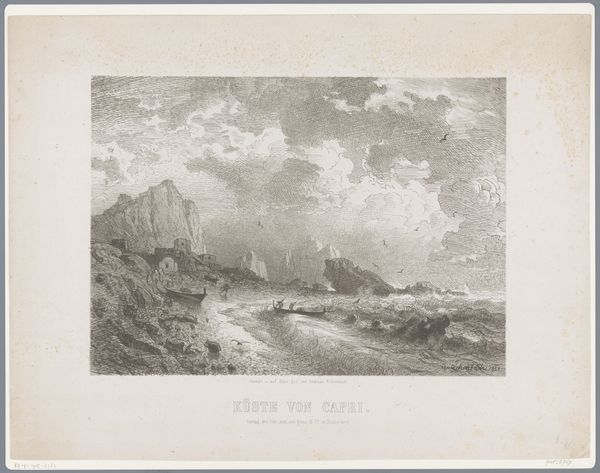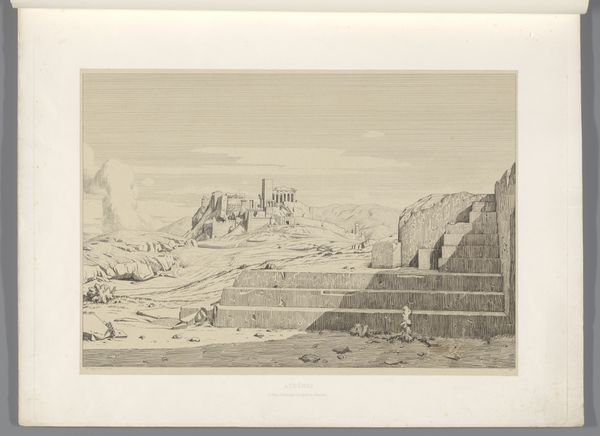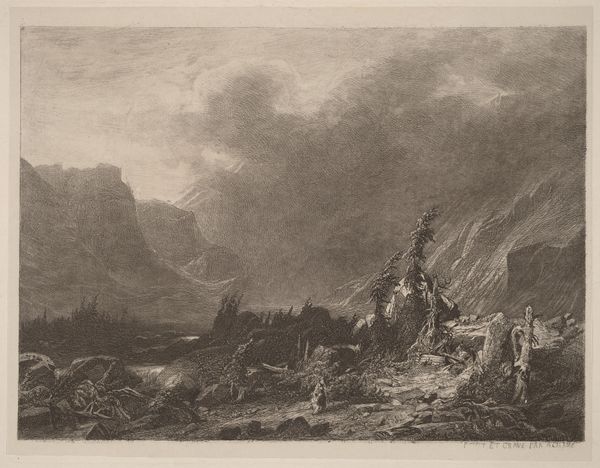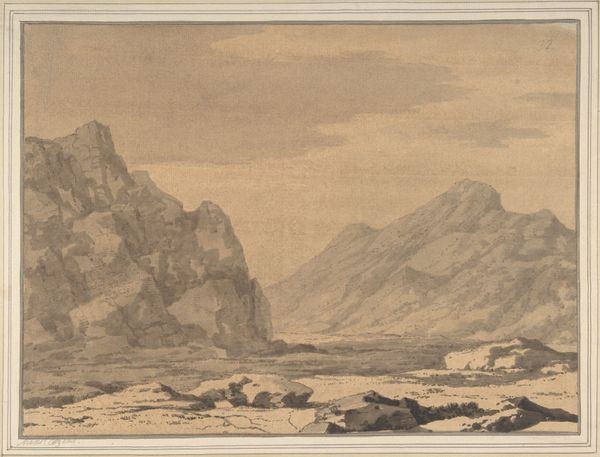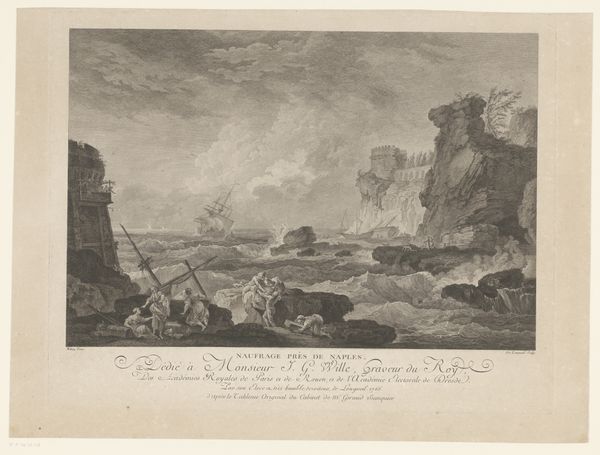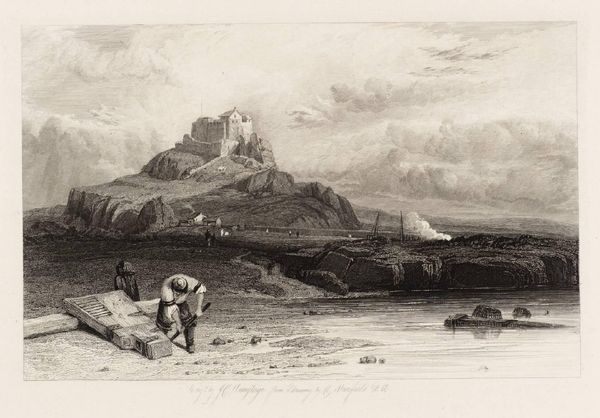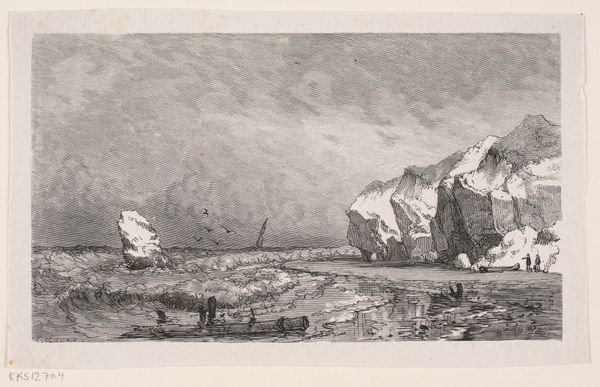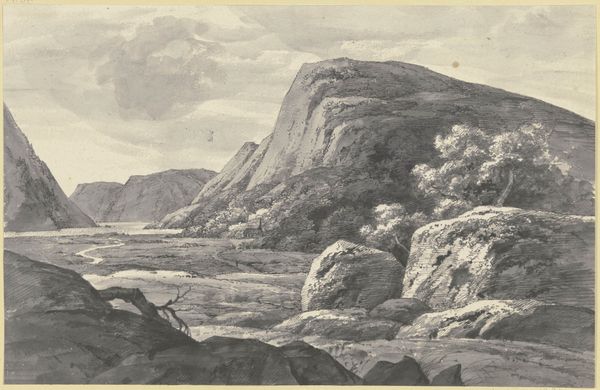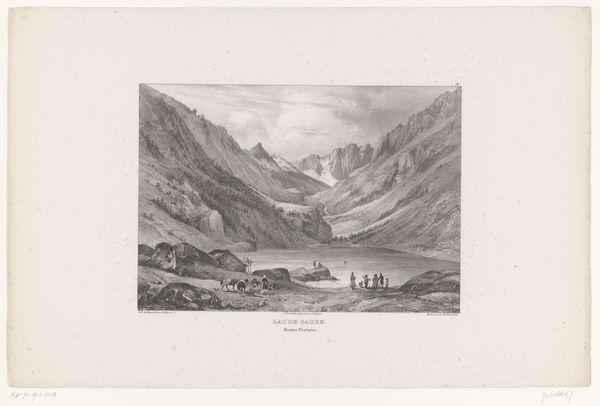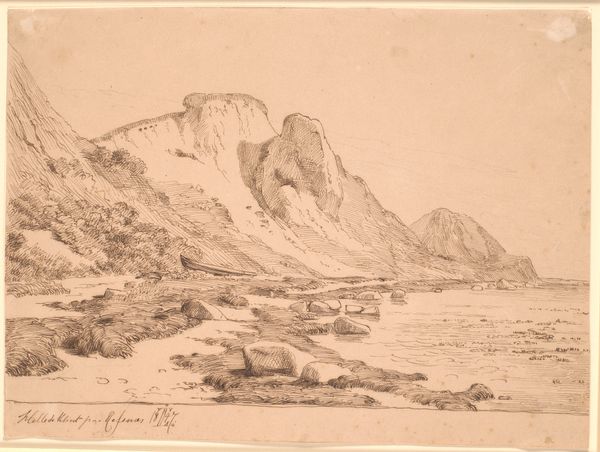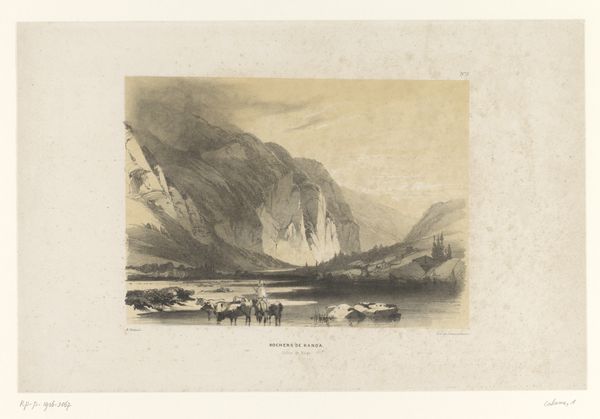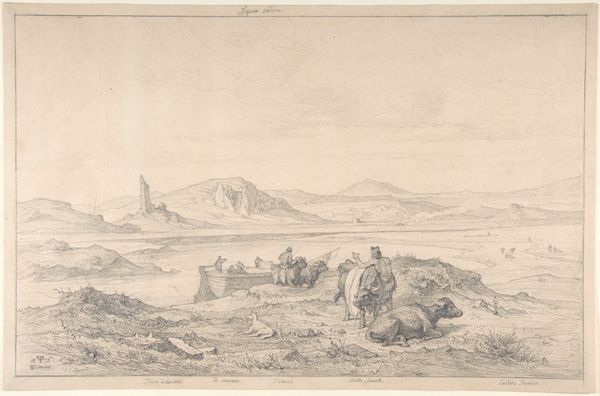
Dimensions: 319 mm (height) x 438 mm (width) (bladmaal)
Curator: Grindefangst ved Færøerne, or The Whale Hunt in the Faroe Islands, created around 1860 by Jens Peter Lund. It’s an etching and aquatint, showcasing a traditional Faroese whale hunt. What are your initial thoughts? Editor: Stark, immediate. The drama of the hunt unfolding against that imposing landscape, the rocky cliffs dominating the composition. It makes me think of resources, about humans imposing themselves. Curator: Absolutely, it speaks to the intersection of humanity, nature, and the social structure governing that interaction. The romanticism movement’s emphasis on the sublime within landscapes often intersects with political and economic narratives, don’t you think? The way Lund frames the community’s engagement here, there are some issues around power at play. Editor: Agreed. Lund really emphasizes the making of this image. The use of etching and aquatint, gives the scene a textured almost tangible quality. Those materials speak to accessibility through prints and therefore to communicating the events to a wide audience, potentially promoting particular political views. It makes one consider the accessibility of the media used to document it and how that can affect reception. Curator: It does underscore that accessibility. Prints allowed these scenes of Faroese life, and debates around traditions and sustenance, to enter broader cultural conversations. Think of the symbolism tied to whale hunting in the Faroes—it becomes enmeshed in a larger discourse surrounding identity, sustainability, and tradition, wouldn't you agree? Editor: Of course, the pilot whale in the center are the agents of production in this moment of high consumption, an event deeply entrenched in the community's subsistence, and the community seems to collaborate in the hunt: men in boats or simply watching from the rocks. Curator: I agree entirely! Examining art, regardless of its age, reveals how culture and power dynamics are intricately entwined. What appears as tradition, romantic, and or historical can in reality be something to analyze, something actively shaped to reflect cultural aspirations. Editor: Yes! It is a reminder of the intrinsic link between materials, making, and messages. Thinking through these complex visual and material threads helps bring fresh ideas to our perspectives of our relationship to resources.
Comments
No comments
Be the first to comment and join the conversation on the ultimate creative platform.
